Brighton’s Royal Pavilion was built in 1787 as a royal residence for George, Prince of Wales but was not completed until 1823. The Prince of Wales, who became Prince Regent in 1811 and later became King George IV, was a frequent visitor to Brighton and the royal presence was instrumental in Brighton’s growth as a fashionable seaside resort.
John Nash extended the building between 1815 and 1823, transforming it into an Indian-style palace. This exotic building is Brighton’s major landmark and it features lavish Chinese inspired interiors and an opulent banqueting room. The building’s Asian influence shows the popularity of exotic cultures in the Regency era and it a striking alternative to conventional Regency architecture.
Brighton was a popular retreat for George IV and his successor, William IV but Queen Victoria didn’t enjoy Brighton quite as much and in 1850 she sold the property to the town. Initially, the Royal Pavilion was used as assembly rooms for the town council and for public events and it was famously used as a hospital for Indian troops during the First World War. After the Second World War, the building was restored to the condition it appeared during its Regency-era heyday.
What to see at the Royal Pavilion
The Royal Pavilion (also called the Brighton Pavilion) is one of Brighton’s top attractions and it attracts around 400,000 visitors each year. It is a stunning example of the style of exotic design popular during the Regency period.
Rooms open to visitors include the Banqueting Room, the Great Kitchen, the Music Room, the Saloon, reception rooms and the royal bedrooms.
The Banqueting Room features a colossal 9.1m- (30 ft)-high chandelier weighing around one tonne and George IV would host massive feasts here, sometimes with up to 70 different courses.
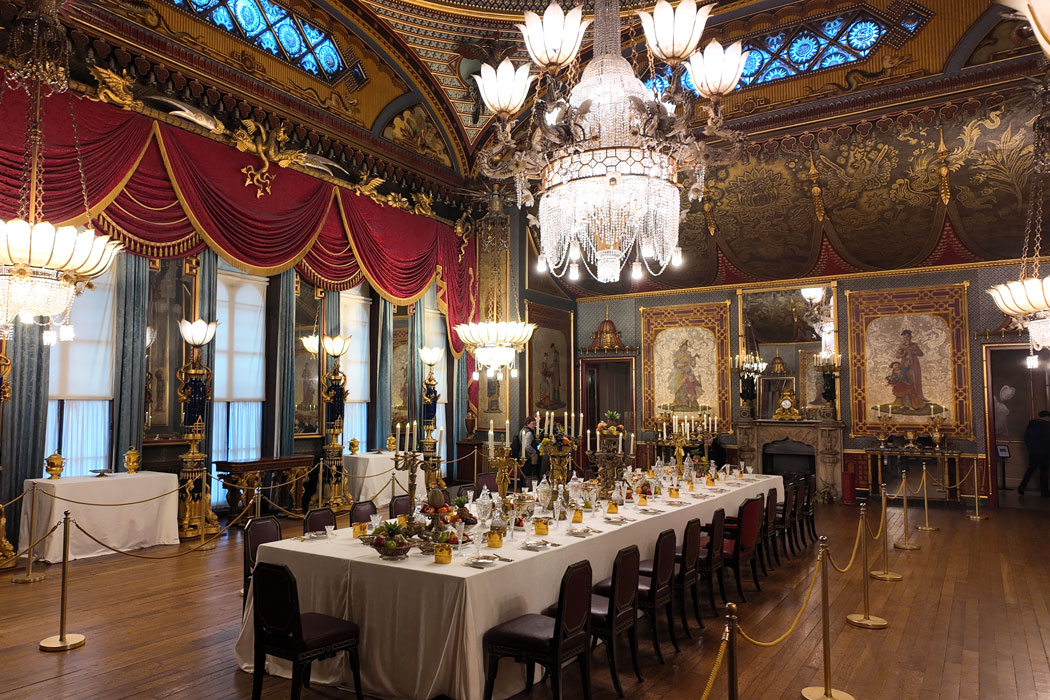
The recently restored Saloon is a highlight of a visit to the palace. It features platinum-leaf walls, custom-woven silk panels and a conspicuous carpet emblazoned with a design of dragons and lotus leaves. This is the room where guests would have waiting prior to dinner in the Banqueting Room.
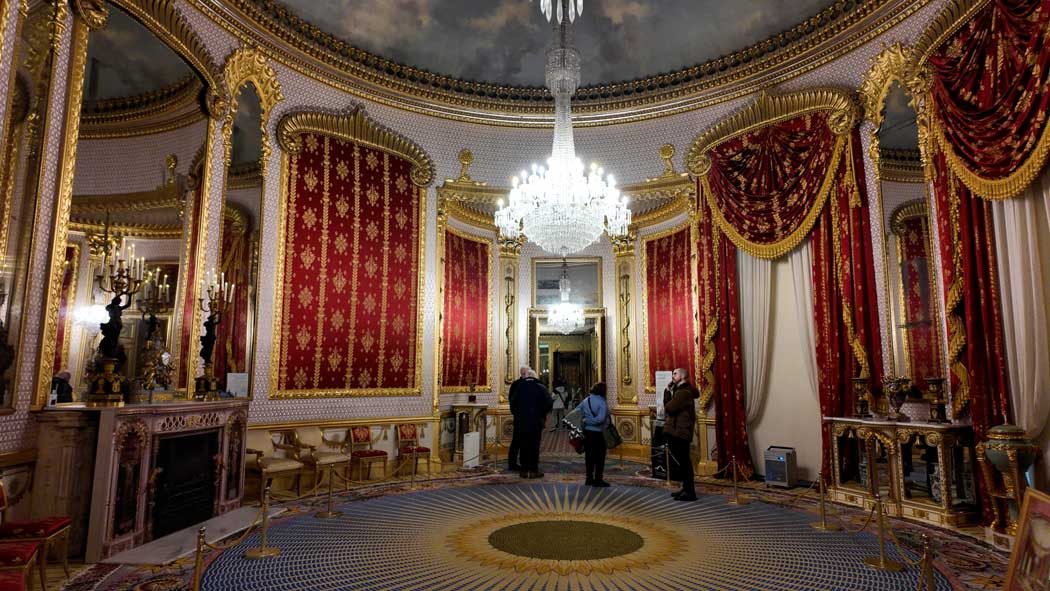
The Great Kitchen was one of the most impressive kitchens of its day and it features cast-iron columns decorated with copper palm leaves. It was a kitchen designed to impress and, unusual for the time (when servants’ quarters would usually be hidden from view), guests to the palace would often be given a tour of the kitchen.
The Music Room is where George IV and his guests would be entertained by his own band and the Italian composer Rossini performed here in 1823. The room features nine lotus-shaped chandeliers and walls are decorated in a Chinese-inspired style.
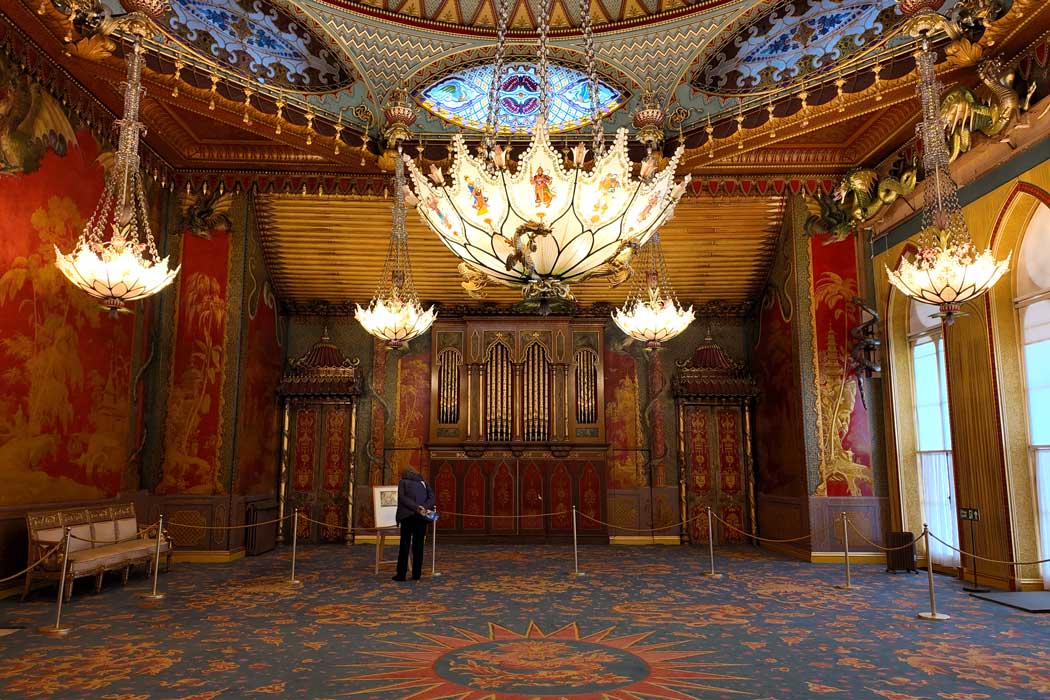
There is an exhibition in the Royal Pavilion’s Prince Regent Gallery (on the first floor) showing how the saloon was restored.
The reception rooms include the Long Gallery near the main entrance, which links the main state rooms, the Banqueting Room Gallery, where guests would retire after dinner to talk and drink and the Music Room Gallery, where guests would go after visiting the music room.
The royal bedrooms include the king’s apartments on the ground floor and the Yellow Bow Rooms and Queen Victoria’s apartments on the first floor.
King George IV’s apartment was moved to the ground floor during John Nash’s redesign and it is decorated in a moderate style compared with the building’s public rooms with mostly English and French furnishings although the wallpaper still features Asian motifs.
George IV’s brothers, the Duke of York and Duke of Clarence, also have their own apartments inside the Royal Pavilion. These are known as the Yellow Bow Rooms due to their bold chrome yellow colour scheme.
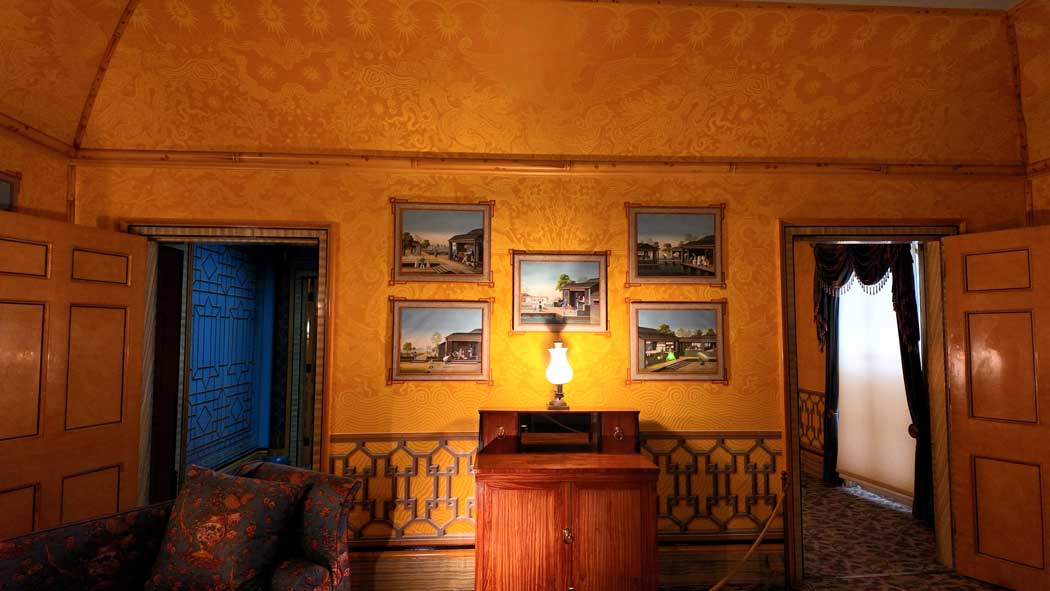
Although Queen Victoria was not particularly fond of Brighton, she did make several visits and had apartments at the Royal Pavilion modified for her use. The style of these rooms is less ostentatious than the rest of the palace as she wished to distance the monarchy from the extravagance of the Regency era.
The design of the building’s interior is somewhat garish and completely over-the-top and each room is different in its own way. It is certainly one of the most unique royal palaces in Britain.
Most points of interest are on the ground floor and the main attractions upstairs are the Yellow Bow Rooms and Queen Victoria’s apartments plus several galleries with exhibitions relating to the palace.
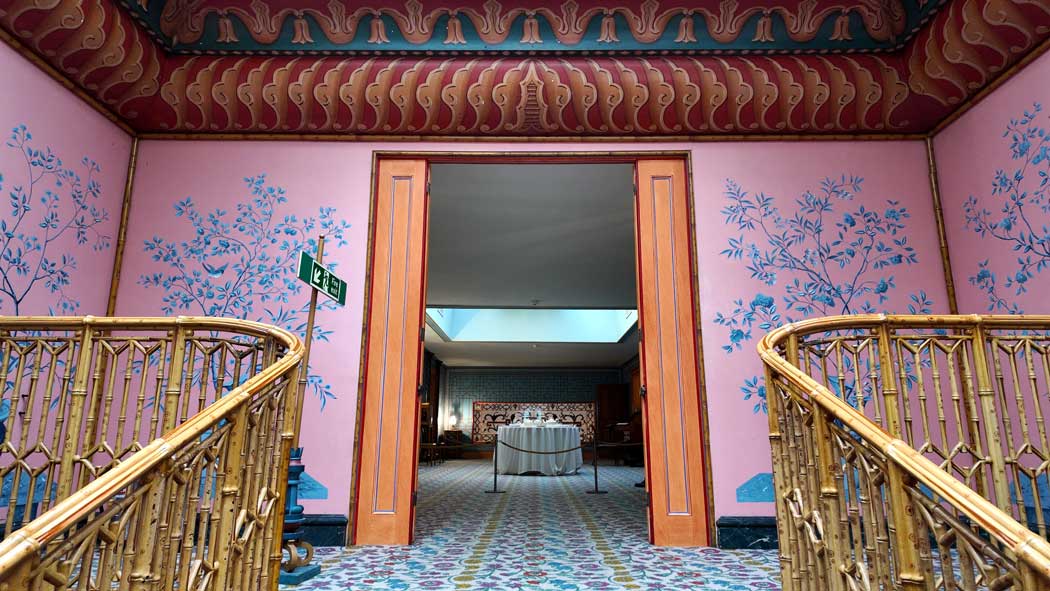
The palace is surrounded by the Royal Pavilion Gardens, which is one of England’s few fully-restored Regency-era gardens. It was restored according to John Nash’s original 1820 plan and features a unique collection of elm trees.
Visiting the Royal Pavilion
The Brighton Pavilion is located in the Pavilion Gardens at the eastern edge of the city centre. It is close to other attractions in central Brighton with most points of interest in the city (including The Lanes, the SEA LIFE Centre and the Brighton Palace Pier) located within a 10-minute walk and the Brighton Dome and Brighton Museum & Art Gallery just a few minutes walk away. Most local bus routes stop nearby on North Street.
It is open year-round with slightly longer opening hours during the summer months.
Visitors have access to the two main floors inside the Royal Pavilion. The ground floor is wheelchair accessible but access to the first floor is via staircase only. However, the doorways to the music room and the king’s apartments are narrow and some larger motorised wheelchairs may not be able to enter these rooms. Because wheelchair access is not available to the entire building, disabled visitors receive a discount on the admission charge and a companion can visit free of charge.
Audio tours are available for an additional £2 charge and a free version of the tour can be accessed on your own mobile phone. Audio tours are available in English, easy English, French, German, Italian, Mandarin Chinese, Russian and Spanish. There is a children’s version of the English audio tour that is timed so children can follow the tour at the same pace as their parents using the standard audio tour. The audio tour device includes a video tour of the first floor for visitors who are unable to climb the stairs and a British Sign Language version of the guide is also available.
There is a gift shop on the ground floor.
Free Wi-Fi wireless internet access is available throughout the complex.
There is quite a lot to see here and you should allow 2–3 hours for your visit.
Book your tickets to the Royal Pavilion
Save time by pre-booking your tickets to the Royal Pavilion in Brighton, East Sussex. Tickets are supplied by Get Your Guide and emailed to you and you will be able to either print or show your tickets on your smartphone when you arrive at the attraction.
We may earn a small commission if you buy your tickets after clicking this link.


There are no comments yet.